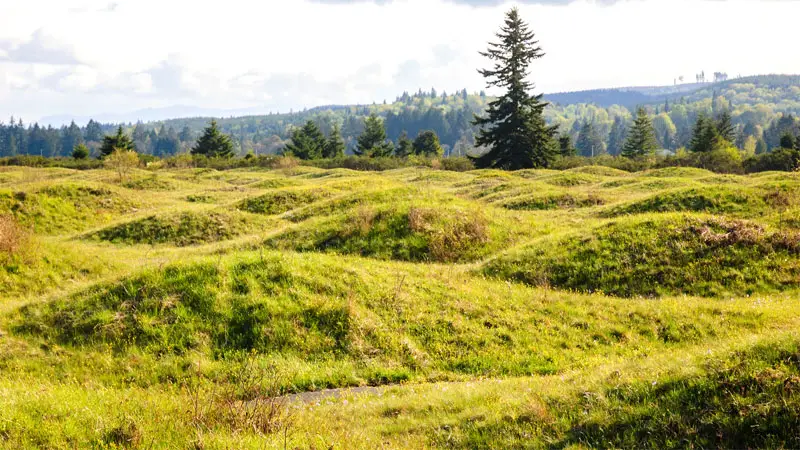The world is a big place, and a lot more varied than we sometimes give it credit for. There are rivers in the oceans and seas without any water. As the fractured crust moves along on its tectonic plates, the terrain changes and landmasses are formed or disappear.
The term “terrain” can apply to both landmasses and the organic matter on top of those masses. Here is a nice mix of different terrains, some you know and some you might never have heard of.
See Also: 9 Types of Ecosystems
Types of Terrain
1. Butte
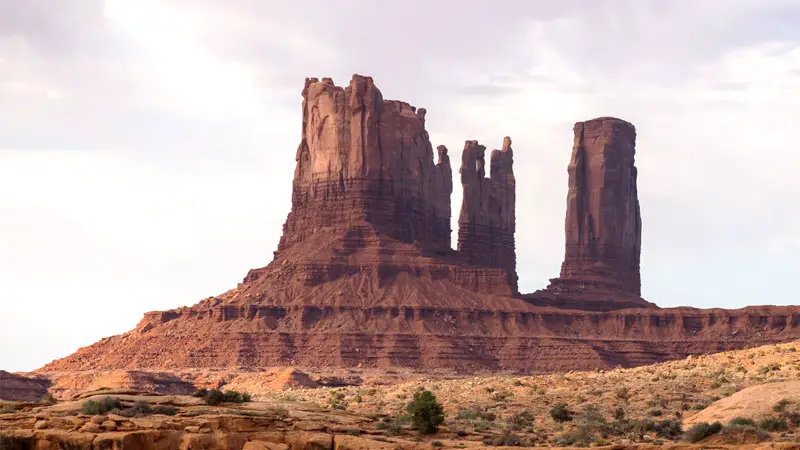
This is an odd bit of terrain that has steep vertical sides and a flat top. They are often found in windswept desert valleys or in canyons. Due to the type of erosion present, a butte’s top has a smaller top than base.
2. Canyon
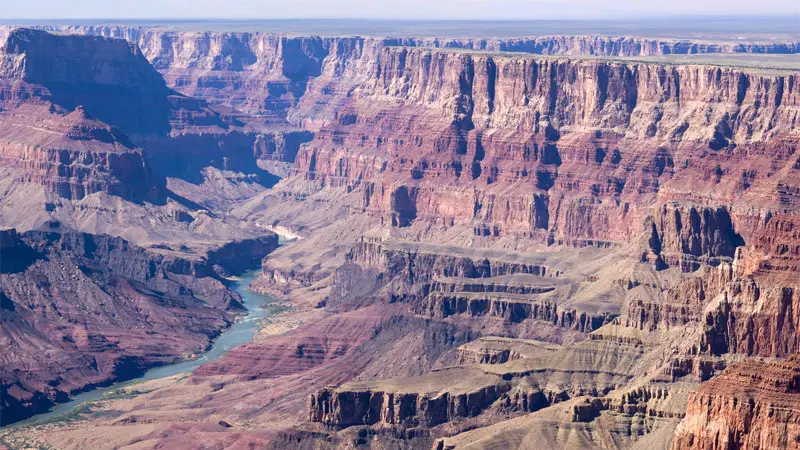
Canyons are the result of water erosion and actually have a lot of subtypes such as box canyons and slot canyons. As a result, some canyons have very steep walls while others have more varied layers.
As the river or waterway erodes its way down, it may cut into the softer geological strata and do less damage to harder rock layers. Meanwhile, years where there are severe droughts or flooding can leave telltale signs on the amount of erosion to the canyon walls that geologists can measure to determine what the world was like during a given era.
Canyons have also been found on Mars, and were one of the first signs found that water once existed on the planet.
3. Desert
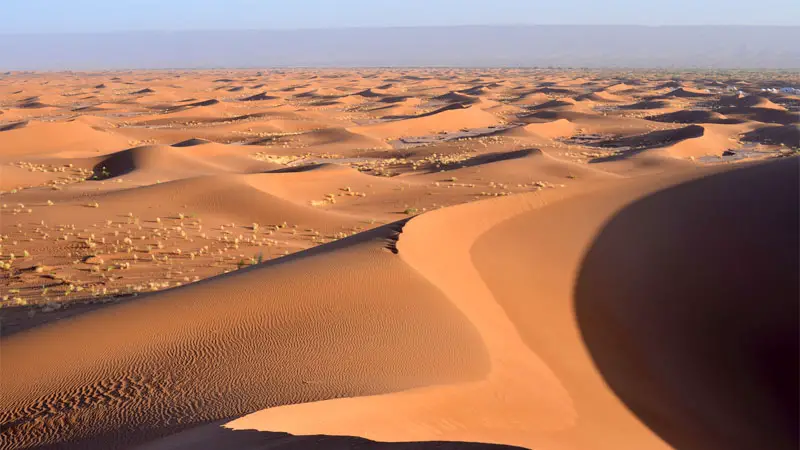
Still sometimes a mystery, deserts are vast tracts of land where little to no water or vegetation can be found besides varieties of cacti. Winds often have no obstruction, leaving behind sandy wastes where erosion is high. In some areas, erosion hasn’t taken its toll and the desert is made of miles of bare rock or baked earth.
Deserts may expand, contract, or even move over time. They have their own subtypes as well. Deserts may be found all over the world, many of which barely resemble the image commonly conjured by its name.
While entire cultures have adapted to desert life, there have been projects and proposals to reclaim desert borders, some of which have proven effective.
4. Forest
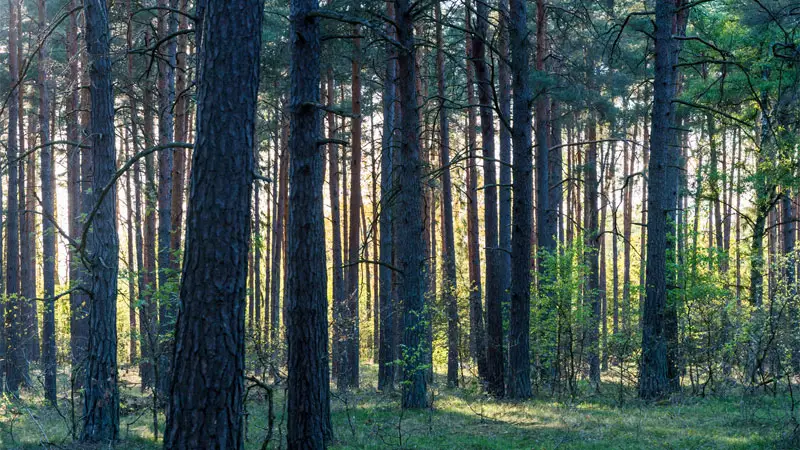
Forests are heavily vegetated tracts of land that may fill valleys or cover hills and are an entire category of their own. Due to the density of trees, ferns, ivy, and other vegetation, forests have become a major focal point in myths and legends and are often the settings for horror stories.
Despite their reputation, forests are perhaps the most important category of terrain to life on the planet.
To this day, new species of plant and animal are being discovered in rainforests and jungles every year, and medical science is becoming increasingly interested in the healing potential of plants in these regions. To top it all off, without forests, we wouldn’t have enough oxygen to survive.
5. Glaciers
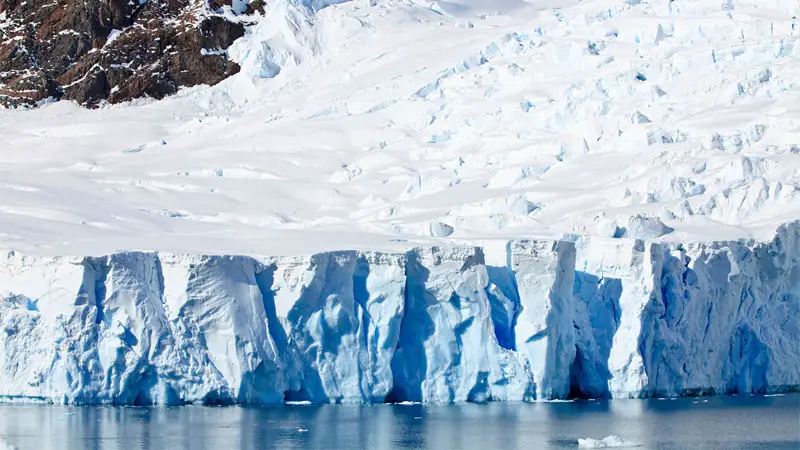
Glaciers, like volcanoes, are both a terrain and the creator of new terrain. In the case of glaciers, ice and snow takes the place of lava, pouring down mountainsides and covering anything in its path. However, unlike volcanic rock, glacial ice digs into the land beneath, heavily eroding it.
When a glacier recedes, it leaves behind a devastated wasteland that bears little resemblance to how it looked before. However, the land usually soon recovers and thrives.
Glaciers can be big or small, and are most prominent during major and minor ice ages. But there’s another odd aspect to glaciers that’s rarely discussed, and that’s their ability to create land where there was none before. The two most prominent places for this are at the poles.
Antarctica is much smaller than it appears on maps due to the massive glacial formations that cover it and will likely continue to cover it over the next hundred million years as the continent slowly drifts further from its original Pangean nesting spot under Asia.
The other is the northern ice cap, which was even mentioned in the Book of Job and is populated by both people and animals despite stretching over an entire ocean.
6. Hill
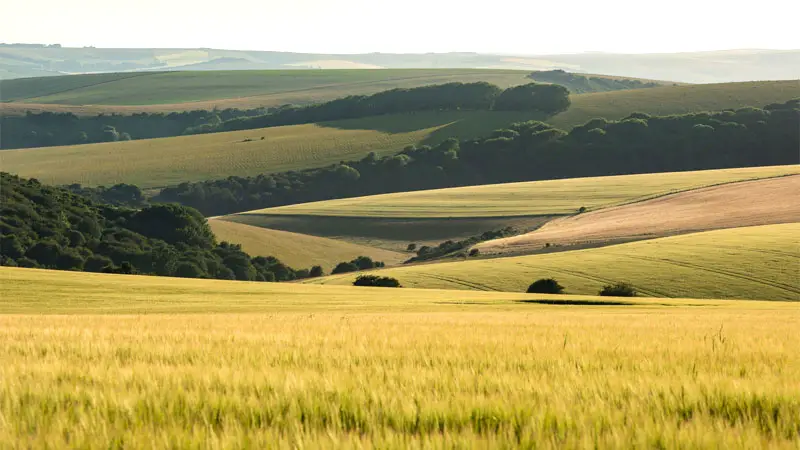
When someone mentions a hill, it doesn’t sound that complicated. However, hills have a broad enough definition that sometimes they’re considered the same as mountains (much like rats are often considered a type of mouse).
Hills are built up from sediment, either naturally or by human disposal of materials. They may also be torn down through erosion from mountains. This is why hills are most commonly found between plains and mountain ranges, although they can appear on their own as well.
Some hills even look like miniature mountains with a distinct peak, while others have a more rounded apex and others still are broad and relatively flat on top.
7. Marshland
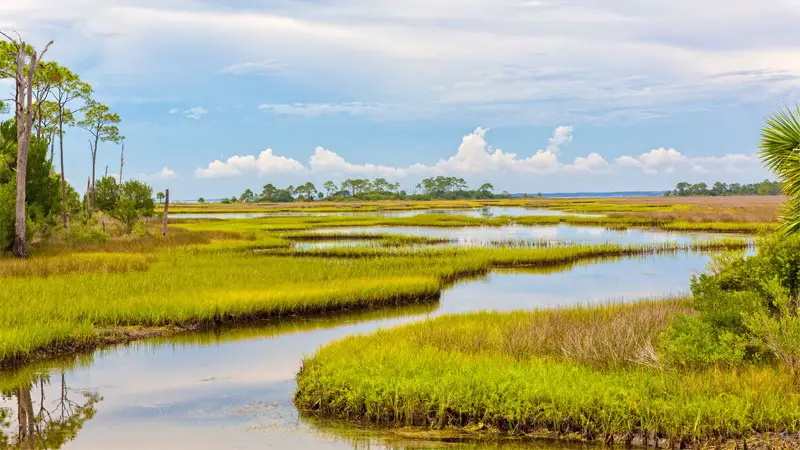
If you’ve ever looked at a map of Florida, you might be surprised to find that nearly half of it (if not more) is all marshland. From the bayous of Louisiana to the Scottish moors, to swamps and beyond, there are several kinds of marshland with one thing in common: they’re land that’s constantly flooded to some degree.
Marshland can be very shallow or deep enough to boat over and sometimes even has forest growth. They can be a source of wildlife but also deadly due to various gasses that are released due to the fast decay rate.
Marshes are most commonly found along shallow river planes and coastal areas where the high tide covers the land.
8. Mesa
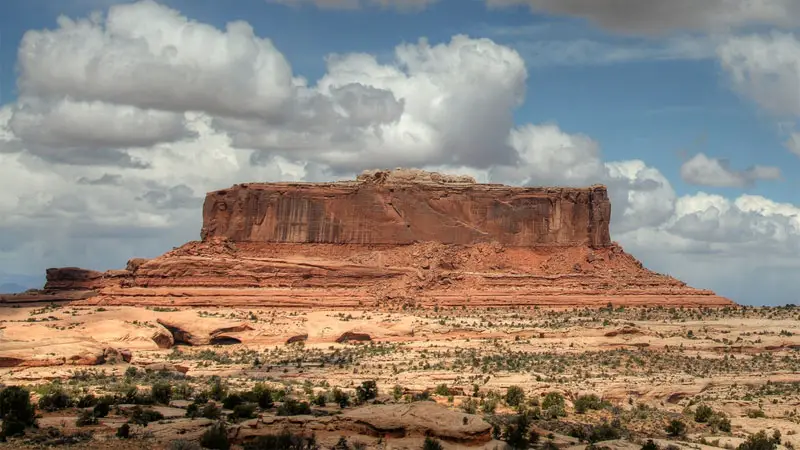
Just as stalactites have stalactites, buttes have mesas. A mesa, much like a butte, has steep, vertical sides and a flat top. However, due to differences in erosion, mesas sometimes have a wider top than base.
Frequently found in canyons, the erosion is commonly caused by water more than wind.
9. Mima Mounds
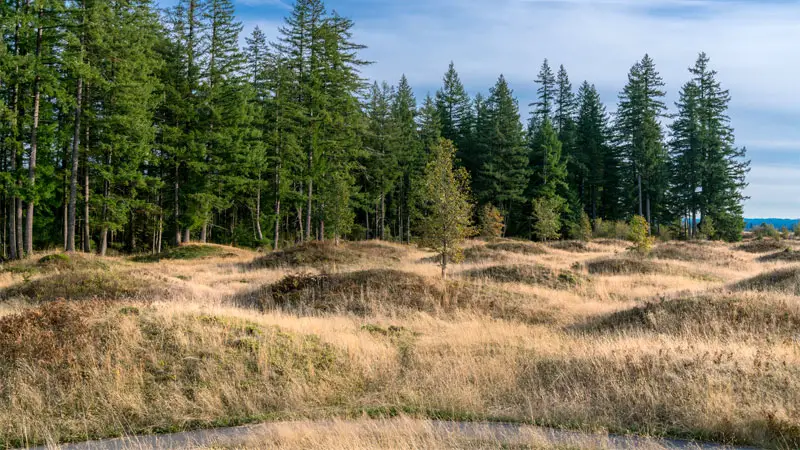
These peculiar bits of terrain happen all over the world and nobody can figure out how or why. They’re circular to oval mounds of sediment that is loosely piled up. They can appear like small hills and sometimes as small as a few feet in diameter.
Theories on their origins have included floods, earthquakes, wind, and even pocket gophers, but no theory can explain the majority of mima mounds, let alone all of them.
10. Mountain
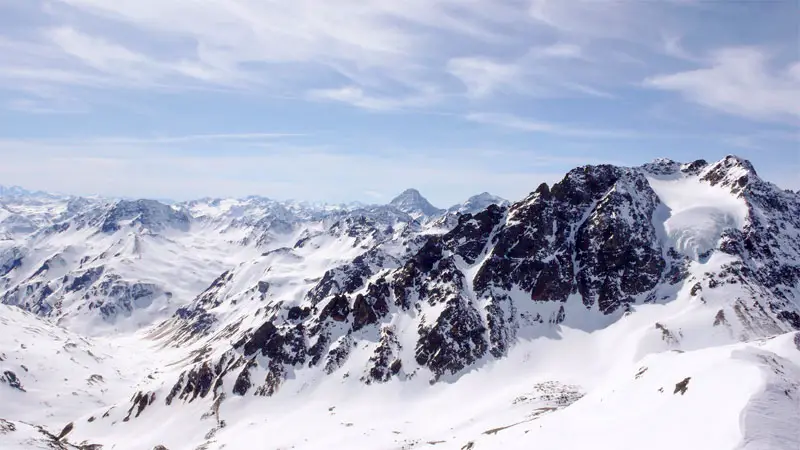
Mountains are one of the most iconic and fascinating types of terrain out there. Caused by one tectonic plate grinding under another and raising the latter’s edge up, mountain ranges are a point of obsession for both sports enthusiasts and historians alike.
While strip mining in California, one company found the remains of a whale in the middle of a mountain. In the Andes, remains of fishing villages and even fishing boats can be found miles above sea level. And we can even watch the formation of a special kind of mountain called a volcano as it happens.
Read Also: 10 Types of Gravel
11. Oceans and Seas
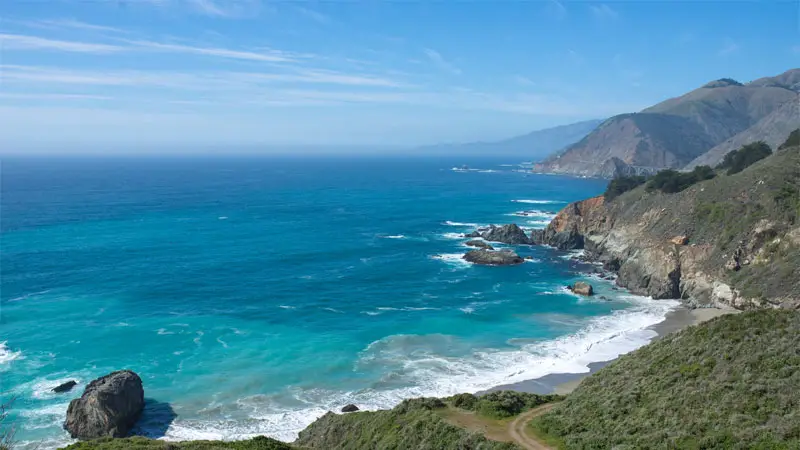
You might not think of these as terrain outside of a strategy game, but they’re some of the most important. Oceans are vast tracts of saltwater that make up roughly two-thirds of the planet’s surface. There are five oceans, one of which (the arctic) is actually mostly buried under glacial ice.
Seas are smaller than oceans but larger than lakes (with the exception of the Great Lakes) and are distinguished from lakes by the presence of saltwater instead of fresh water.
The most famous of the “seven seas” is the Mediterranean, while the most infamous is the Dead Sea, so named because the saline content is so high that it cannot support life.
Of course, there are more than seven seas in the world, but that classic count refers to seas containing major shipping lanes, especially along the spice routes.
Read Also: 9 Different Types of Fishing Reels
12. Tundra
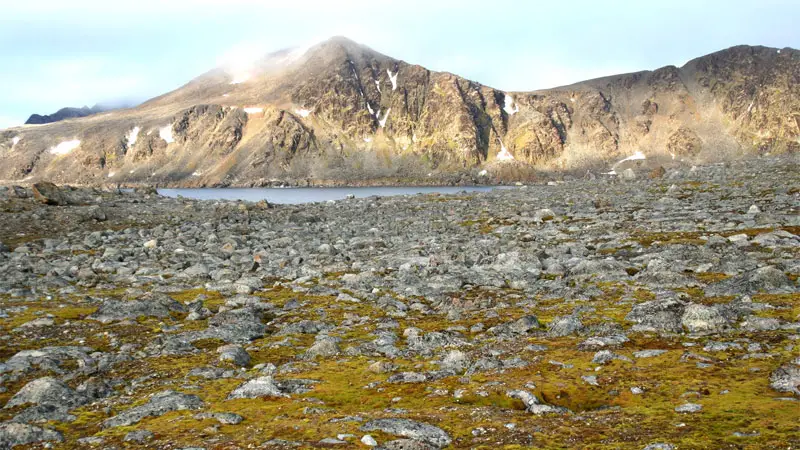
The name of this terrain type is perhaps its best description, as the word is based on a Russian term meaning “treeless mountain tract”. These chilly landmasses are covered in lichens and sparse vegetation, often covered in snow or permafrost.
While often depicted as being home to pine forests, tundras are actually a strip of terrain between the forest line and mountains.
Despite having little vegetation, they’re important to migrating species such as caribou and were once heavily populated by nomadic tribes of Native Americans who would follow the migrations.
13. Volcanoes and Volcanic Regions
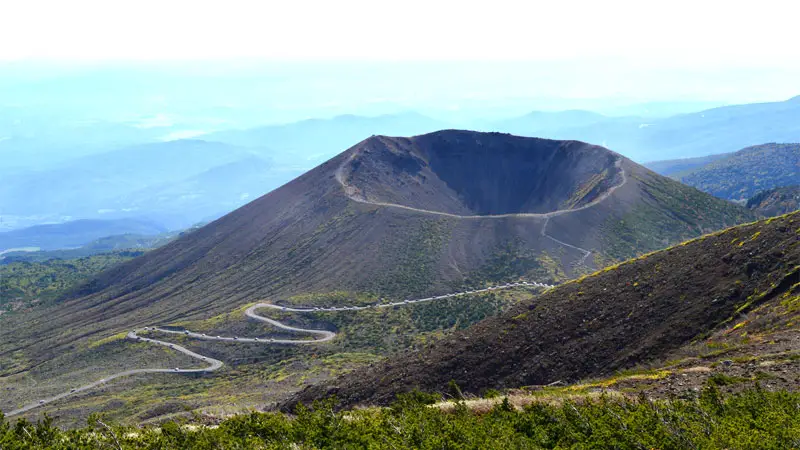
Volcanoes are some of the most fascinating types of terrain because they’re mountains that can grow almost overnight and are the sources of entire geological formations. Many types of geodes are found here.
Many islands, especially around the Pacific Rim (often known as the Ring of Fire) are caused by volcanic activity, and islands have been known to literally spring up overnight.
Read Also: 7 Types of Magma
In addition, as erosion breaks down volcanic rock, it leaves behind incredibly rich soils which allow for farming and forests. In other cases, the combination of the main cone and multiple vents lead to massive islands such as Iceland and the islands that make up Japan and Hawai’i.
While the average person doesn’t think about volcanic formations as being unique from other terrain types, it’s a very important distinction to geology and agriculture.

